Design for play

Explore children’s playgrounds, their history and how we design for play in this online exhibition.
The 2019 FOLAR symposium coincides with the 90th anniversary of the Landscape Institute, the archive of which is held at The MERL.
The images in this exhibition include drawings and designs created by eminent British Landscape Architects, members of the Landscape Institute whose archives are held at The MERL, as well as trends highlighted in the journal of the Landscape Institute over the decades.
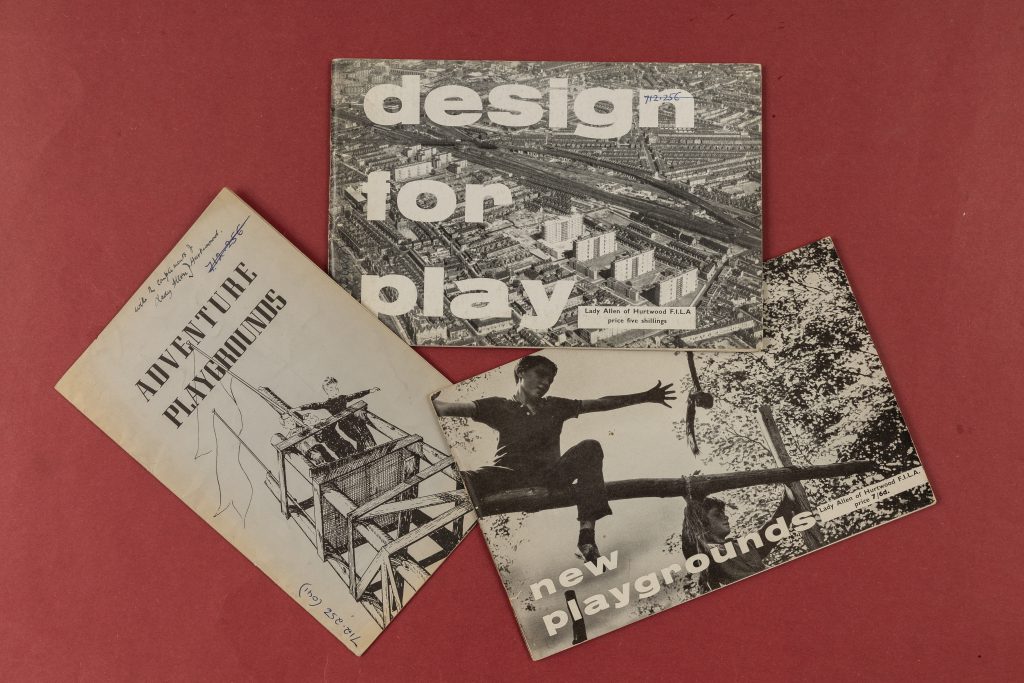
Lady Allen of Hurtwood
Marjory Allen, known as Lady Allen of Hurtwood (1897-1976), was elected first fellow of the Institute of Landscape Architects in 1930.
As a political figure and a landscape architect she championed a range of causes related to child welfare, including playgrounds and facilities for children living in urban areas.
She was a committed campaigner at international level, serving as liaison officer with UNICEF and organising a seminar at the UN on playgrounds in 1958. She was also the author of various books about children’s playgrounds and adventure playgrounds, importing new trends from abroad – particularly Denmark – with the aim of revolutionising the idea of children’s space in British cities.
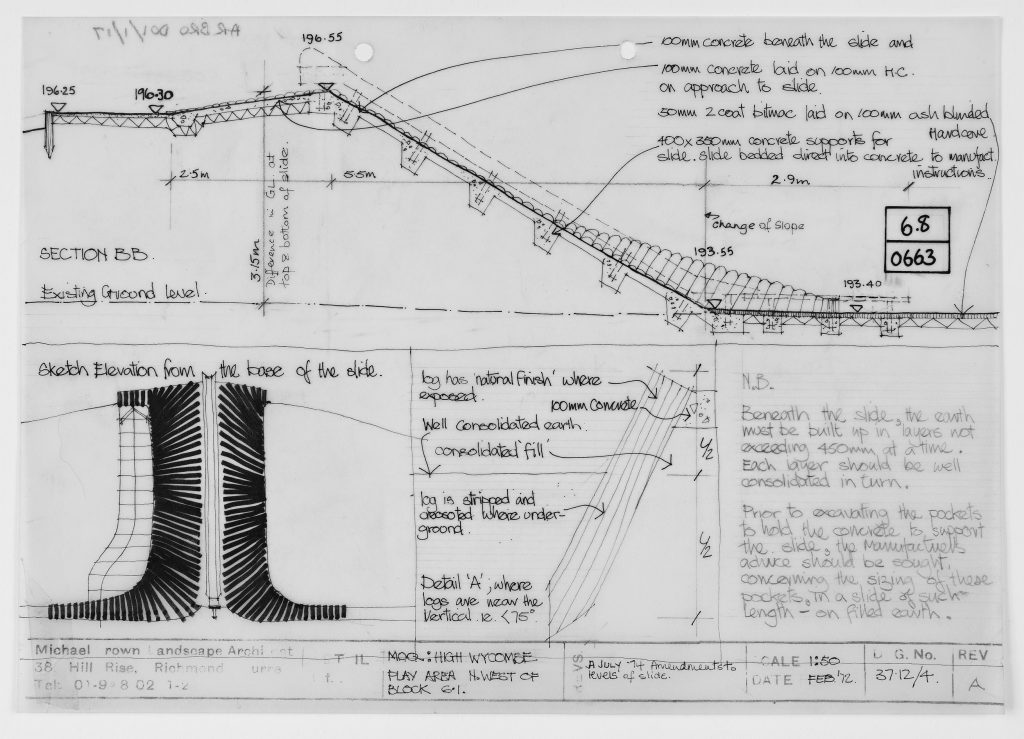
Michael Brown’s playgrounds
This drawing shows the planning involved in the design of one of Michael Brown’s play areas, which were mostly situated within the context of housing estates and urban redevelopments in the 1960s-70s.
This drawing for the M.O.Q. High Wycombe play area highlights the difference in ground level across the area and provides instructions on the use of materials involved (concrete, soil, logs, gravel and Bitmac).
A stainless steel slide would have completed the project and transformed it into an iconic Michael Brown’s playground. Michael Brown (1923-1996) set up his own landscape architectural practice in Richmond in the 1960s and is renowned for his limited use of materials, which produced distinctive landscapes.

Brickwork and slides: the Brunel Estate
This picture of the Brunel Estate from ca.1974 manages to capture the essence of Michael Brown Partnership’s ability to create an innovative and adventurous play area within the constraints of an urban development.
The stainless steel slide, the slopes and the red brickwork contribute to make it an instantly recognisable landmark. This playground still exists despite having undergone various improvements, including use of shock absorbent materials and levelling of ground differences, mainly due to health and safety concerns.
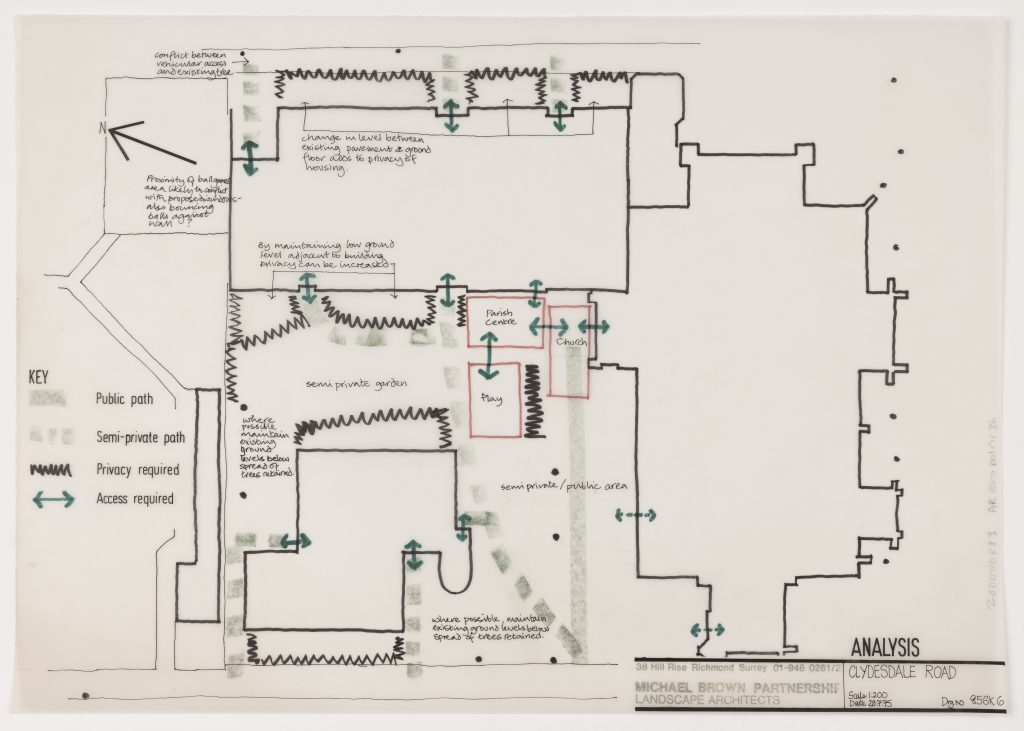
Clydesdale Road Flats and Community Centre
This image shows another urban redevelopment drawn by Michael Brown for flats and a community centre in Notting Hill in the late 1970s.
It involves the integration of existing historic buildings, such as the church on the right, with newly built flats and a community centre, in a context that mixes public spaces with private and semi-private ones and manages to include a children play area at the centre as its focal point.
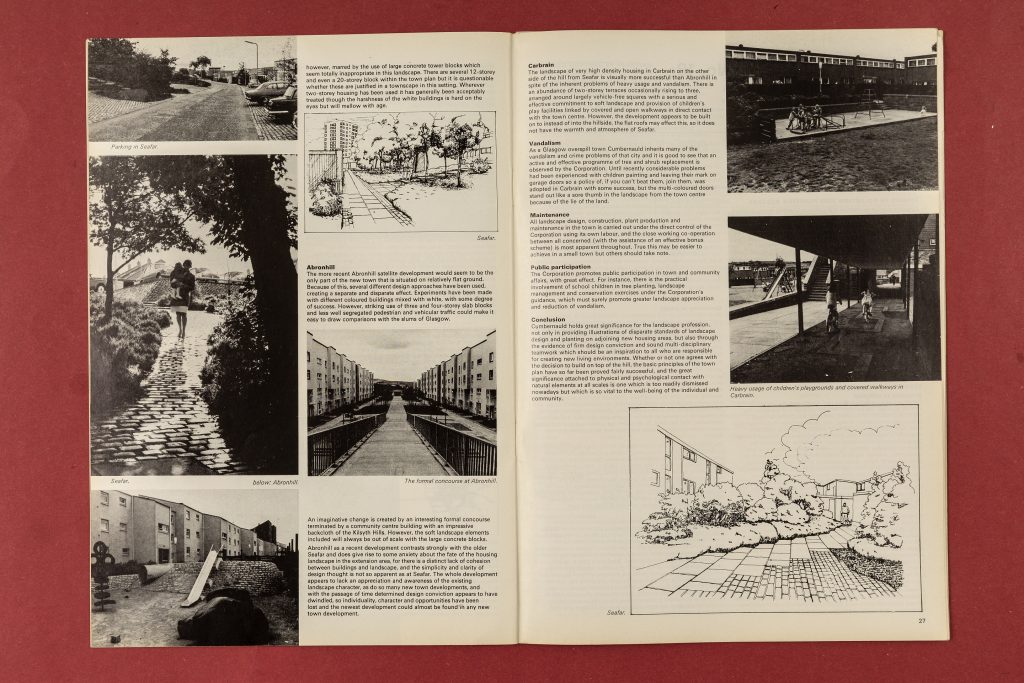
Play streets and new towns
This photograph, taken from Landscape Design: Journal of the Institute of Landscape Architects (Feb. 1974), shows examples of children’s play areas in the context of social housing estates built for new towns in Scotland.
In the post-war period new towns provided a perfect opportunity to design innovative play schemes and playgrounds within attractive and salubrious urban environments benefiting from segregated pedestrian and vehicular traffic.
The idea of “play streets” had been mentioned as early as 1938 in the Street Playground Act, but there were few opportunities to implement them until after the Second World War.
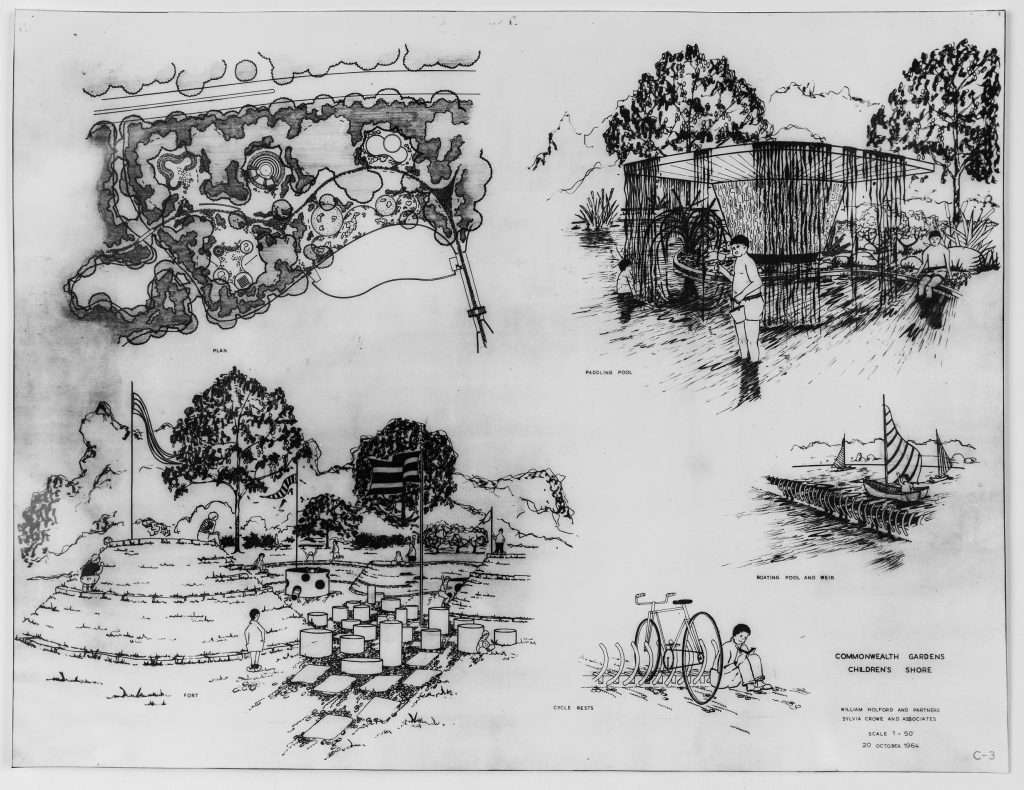
Sylvia Crowe’s Commonwealth Gardens
Dame Sylvia Crowe (1901-1997), who was President of the Institute of Landscape Architects (later the Landscape Institute) from 1957 to 1959, worked on major international garden and landscape projects, including the Commonwealth Gardens in Canberra, Australia.
In 1964 Crowe was responsible for the master plan of the Commonwealth Park, as it is now known, but she also made detailed drawings for particular spaces within the park. Displaying her usual artistic flair these drawings show different ideas that Crowe was developing for areas devoted to play, sports and other children activities.
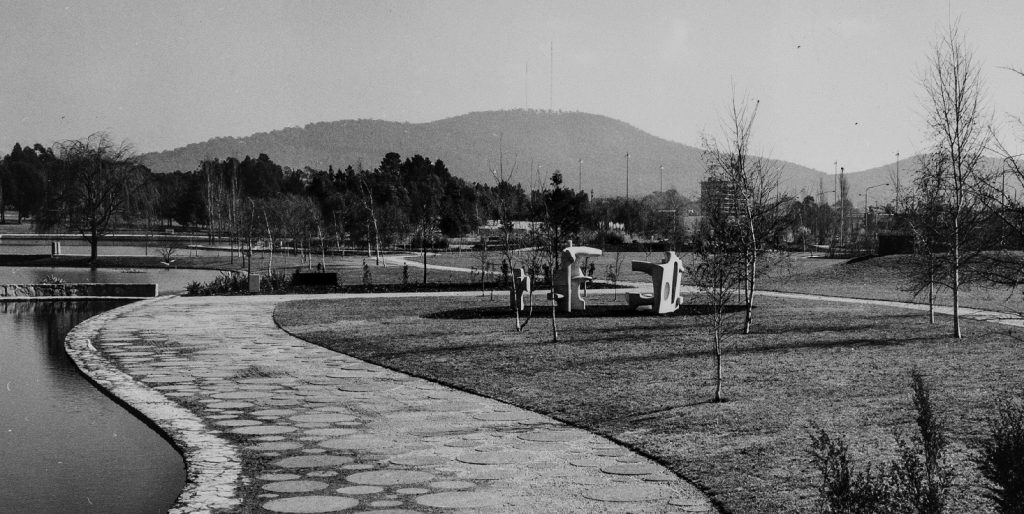
Play sculptures
This play sculpture was commissioned for the Commonwealth Gardens (Canberra, Australia) in the late-1960s and was created in 1970 by the artist David Tolley.
The composition was made of 4 white sculptures and was constructed from precast concrete and finished with fiberglass. The purpose of such play sculptures, a trend that originated in Scandinavia in the late 1950s and was subsequently adopted by municipalities in Britain, was to satisfy the children’s fundamental needs to crawl, climb and swing, while contributing to the aesthetic value of the site. A work of art that is functional and durable, and fits in with the background and setting.
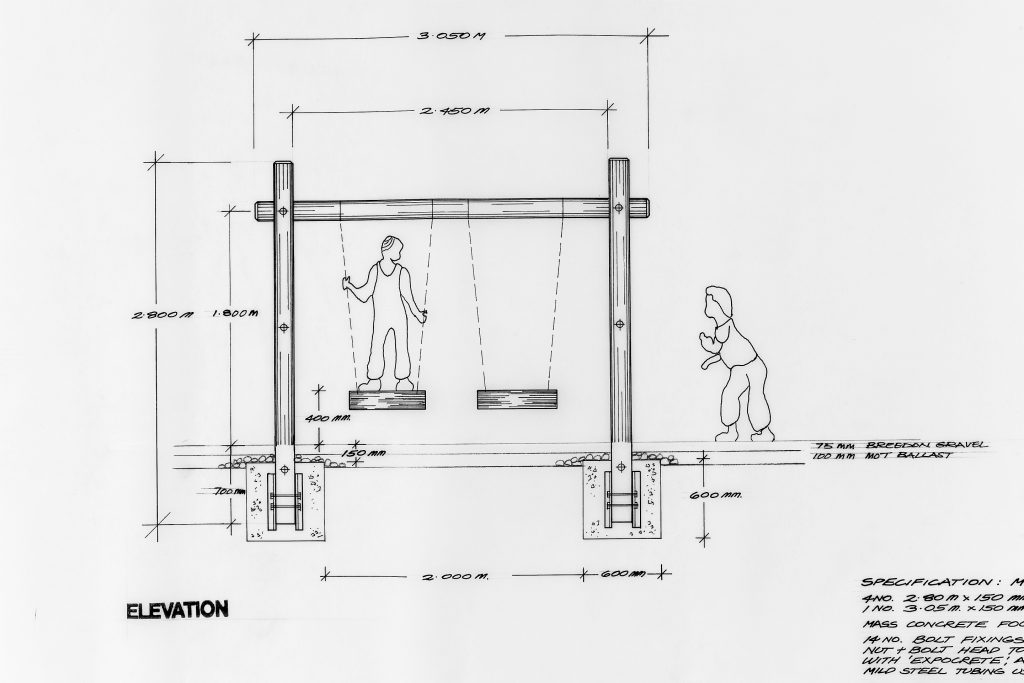
Preben Jakobsen

Landscape Institute Awards
Every year the Landscape Institute Awards are assigned to various landscape professionals “in recognition of their outstanding work, and to encourage excellence”.
There are 21 categories and this drawing is taken from a successful submission in the Heritage and Conservation Award category for 2015. It represents the final master plan for the restoration of The Level, a public garden located in Brighton City centre, which was carried out by LUC and completed in 2013. The drawings highlights how the various play areas, sporting facilities and community spaces are integrated into a harmonious whole that fits inside the available space.